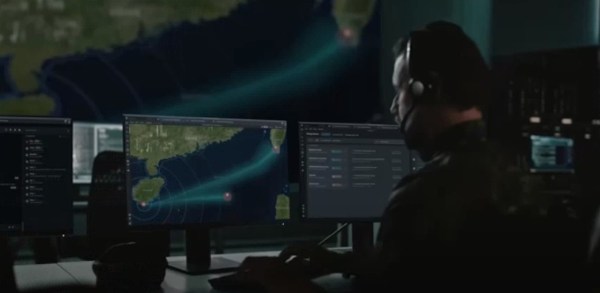Marine Corps sees integration challenges for Replicator autonomous systems

Marine Corps leaders see opportunities for the Pentagon’s Replicator initiative to accelerate the delivery of cutting-edge capabilities. However, there will be significant integration challenges once the autonomous systems are ready to be fielded, according to a top officer.
The goal for the first increment is to deliver thousands of relatively low-cost, “attritable” systems to the joint force by early- to mid-2025 to help U.S. Indo-Pacific Command counter China’s military buildup. Deputy Secretary of Defense Kathleen Hicks recently picked the initial set of capabilities for the effort, and it’s now up to the services to put together acquisition plans for specific systems that fit the bill.
“We must get faster. And there’s a bureaucracy out there that kind of retards some of that. But there are ideas that are trying to push it forward faster. You know, Replicator … I look at it as an opportunity to change the way we think about bringing things aboard, and then getting them out to the user and getting them integrated,” Gen. Christopher Mahoney, assistant commandant of the Marine Corps, said Thursday at a Hudson Institute event.
In addition to carrying out the responsibilities of the job he was tapped for, Mahoney has also been performing the duties of commandant while Gen. Eric Smith recovers from a cardiac arrest episode and open-heart surgery.
Marine units such as littoral regiments and other elements of the so-called stand-in force could potentially leverage Replicator tools.
Mahoney did not identify the specific systems that the Corps is proposing for the initiative, but he suggested the service is eyeing four platforms or capabilities.
“We have some … equities in Replicator that I believe the focus that the DepSecDef has put on this, and the pressure and the authorities brought into it will accelerate the [acquisition] cycle. Now we’ve got to make good that’s down and in it, right? Marine Corps, get your act together. You said that these four things are important to you. Programmatically, you better be ready to go, you better not be false advertising a [technology readiness level]. And you know, the flip side of the TRL to me is integration readiness level that we talked about. That’s down and in. OK, so we got to do our work up and out. We got to make good with industry. You can’t be like Lucy pulling the football away from Charlie Brown. You have to get their commitment and make your commitment and move out. And to me, Replicator is an opportunity to do just that,” he said.
Hicks has tapped the Defense Innovation Unit (DIU), which works with nontraditional vendors and helps the Pentagon more rapidly acquire commercial technologies with military applications, to assist with Replicator. Led by former Apple executive Doug Beck, DIU is headquartered in Silicon Valley and has outposts in other tech hubs around the country.
“At the department level, if Dr. Hicks is the head programmer for the department, she’s putting what I consider positive pressure on this. And guys like DIU, like Doug Beck, are pushing hard too. So to the extent that that is an accelerator, we shall see. But I think there’s real opportunity there,” Mahoney said.
However, acquiring systems isn’t the main challenge, he suggested. The harder part will be fully integrating them into the force with logistics, sustainment and other support.
Platforms need to have persistence, he said.
“You buy something that comes in a box, you put the box down, and the theory of the case is you hit your remote, the box opens, this thing goes and does it … That may be the vision [that some people have but] that is almost always absolutely not true. The box can’t convey itself to where it’s going necessarily. When it’s there it probably can’t maintain itself if it gets rained on. It can’t, although we’re working on it, automatically upgrade its software. So, there’s a commitment and an integration that needs to go on with the people who have bought into the equities. That’s the hard part — the harder part,” Mahoney said.
It’s important to develop systems that give the U.S. military a technological edge. However, “if you cannot build that into a training continuum, if you cannot build that into a logistic support and sustainment continuum, if you cannot get that into the field and maintain it, then eventually it will break and break down. I spent some time in the counter-[improvised explosive device] world, and there were tremendous technologies that came aboard and they had a great effect, and I believe that they saved a lot of people. What we didn’t do very well though was integrate those technologies into that progression that I just discussed. And so eventually, it will break. It will either be cast aside, or it will at least be suboptimized,” he said.
The Replicator initiative comes as the Pentagon is pursuing a broader, departmentwide effort known as Combined Joint All-Domain Command and Control (CJADC2). The warfighting construct calls for systems across the entire battlespace from all the services and key foreign partners to be more effectively and holistically networked to provide the right data to commanders for better decision-making.
The Navy and Marine Corps are “awash in information” across the enterprise, Mahoney noted. However, the services need a better way to get that info to the right place at the right time.
“There are more networks out there than probably a Cray computer can count. There needs to be unification of a network concept. And there needs to be a change in the way we think about hardware so that … it’s the software that drives the hardware, not the hardware that drives the software,” he said.
The military needs a mesh capability where anyone can interface irrespective of the machine they’re using, according to Mahoney.
“That will, I think, solve some of the clarity issue — but that has to be enterprise-wide,” he said.
He used the AN/TPS-80 Ground/Air Task-Oriented Radar (G/ATOR) as an example of how systems could be integrated and networked in the future.
It’s a “tremendous sensor in a number of different modes — traditional and otherwise — that can send a ton of information. That information is not rationalized yet. It needs to be computed, it needs to be analyzed. And if you have something like a targeting cell that can do that and combine it with our intelligence information, and then offload that to the fleet or offload that at the same time to a cloud environment where the fleet can take it, [the commander of Indo-Pacom] can take it, anybody can take it, as long as you have the permissions and authorities,” Mahoney said. “It’s a mesh sort of approach where you start with a sensor, the sensor derives information, the information is analyzed and computed, and then it is out there to be pulled in from … whatever environment that you’re in.”






